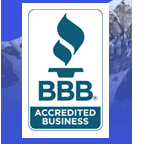Too busy to invoice? Consider a hosted option
2006 March 14 Backbone Magazine
By Paul LimaIf you are planning a ski trip to Whistler, B.C., you
might end up at ResortAc.com, a Web site run by Troy Assaly, president of
ResortAc.com Network. Assaly’s Web site lets vacationers deal directly with home
and condominium owners who advertise accommodations for rent.
When Assaly set up his company about 10 years ago, all his billing was done
manually. He would print invoices and mail or e-mail them and then work to track
his accounts receivable. Even as he computerized, he found it difficult to get
invoices out on time. “I had one-time invoices to send, as well as weekly,
monthly and annual recurring invoices covering different services for different
clients,” said Assaly, who also runs a Web hosting company specializing in Web
sites for resorts. If he became busy, which happened a lot, several months might
pass before he sent out invoices. That had a negative effect on his cash flow
and on clients, many of whom expected monthly invoices and did not appreciate
receiving one big overdue bill.
Assaly’s invoicing problems are now a faint memory. A year ago, he started
billing online with 2ndSite, a Toronto-based application service provider (
ASP). Founded in 2002, 2ndSite offers online invoicing, employee timesheets,
support ticketing, secure document management and contact management services.
 Assaly
is one of many small and medium business ( SMB) owners who have turned to online
business management solutions. Assaly
is one of many small and medium business ( SMB) owners who have turned to online
business management solutions.
Demand by the numbers
According to Forrester Research, 49 per cent of SMBs considered a hosted option
when making software purchases in 2005. While only nine per cent of SMBs rated
moving to a hosted alternative as “very important,” hosted applications are
beginning to catch on, particularly in sales force automation (SFA) and customer
relationship management ( CRM) areas.
Of the SMBs looking at SFA and CRM, seven per cent indicated they will choose
Siebel CRM OnDemand and 24 per cent are leaning toward Salesforce.com.
Microsoft’s non-hosted CRM tool remains the dominant choice with 37 per cent of
SMBs considering the application. However, online applications are making
significant headway. For instance, Salesforce.com, an on-demand CRM solution, is
used by more than 308,000 SMBs and larger enterprise subscribers worldwide.
Headquartered in San Francisco, Salesforce.com is a publicly traded company
founded in 1999 by former Oracle executive Marc Benioff. The company had revenue
expectations for its 2005 fiscal year of US$165 million to US$170 million.
Demand for a particular application has reached a critical mass when Microsoft
jumps on the bandwagon. And in the fourth quarter of 2005, Microsoft launched
Windows Live and Office Live, two Web sites that include consumer and small
business Web hosting, e-mail and other services. The online business services
integrate with Microsoft’s Office productivity suite, but users don’t need
Office to use Office Live.
In many ways, hosted applications are like the computer bureaus that serviced
multiple enterprises in the 1960s and 1970s. However, instead of connecting to
expensive bureaus using a costly dedicated data line, users connect to
moderately priced (and in some cases free, advertiser-driven) ASPs using more
ubiquitous and less expensive Internet connections.
Hosted applications eliminate client-side software integration issues and the
need for large capital outlay for software licenses, because the applications
reside on the vendors’ servers and are then accessed online.
“By eliminating significant set-up, maintenance and upgrade costs, hosted
solutions like Salesforce.com provide a deployment option with lower overall TCO
[total cost of ownership] than premise-based solutions,” said Sheryl Kingstone,
program manager at Yankee Group’s CRM strategies planning service.
In practice
Over the years, Assaly has been through the ringer with accounting packages.
First he used Simply Accounting, then QuickBooks, then NetLedger, then an
obscure accounting package recommended by his accountant. Along the way, he ran
into difficulties because he continually fell behind in invoicing and needed
remote access to his records for multiple users.
Assaly now securely accesses 2ndSite’s application online through his Web
browser. For each customer, he sets up an online billing account that includes
the amount and invoice recurring frequency. Invoices are sent automatically,
clients pay online by credit card and funds are automatically deposited in
Assaly’s business bank account. Assaly can change invoice amounts if a client
purchases additional services, and the system can automatically generate
reminders. “If an invoice is not paid, I receive a reminder and so does the
client,” he said. This makes it easy for Assaly to keep track of receivables or
even cease services for clients who are in arrears.
In the past, he often failed to follow up on outstanding accounts, and reports
the key benefit of 2ndSite is that he is now “collecting more money with less
effort.” Before using 2ndSite, Assaly spent four hours invoicing each month.
With 2ndSite he now spends about an hour each month. And he is paid faster
because online invoicing saves his clients time.
Assaly does not have to send clients receipts as 2ndSite automatically generates
them. Come tax time, Assaly no longer hands his accountant a shoebox full of
paper. He doesn’t even print reports. Instead, he gives his accountant access to
reports on 2ndSite.
Companies that bill based on timesheets can keep track of time spent on a job on
2ndSite and then generate their invoices based on their online timesheets.
BillingOrchard is one of a number of U.S. companies that provides online
timesheet and billing solutions to SMBs. Like 2ndSite, the company provides
automatic recurring billing options as well so business owners can be invoicing
while they sleep. BillMyClient lets users send invoices via e-mail or the United
States Postal Service, all without licking an envelope. But, if they prefer,
BillMyClient clients can even print and mail invoices.
Any PayPal user can send detailed business invoices in minutes with the free
PayPal Invoicing tool that lets users send business invoices for goods or
services via e-mail. The invoices can be broken down into detailed line items by
specifying quantity, unit price, item description, shipping details, tax and
currency; PayPal includes up to 10 invoice templates. Companies that receive
PayPal invoices can click and pay online by credit card or electronic cheque.
In most instances, small business owners do not have to have a credit card
merchant account to use online invoicing services, so they can integrate with
PayPal and other third-party credit card transaction companies.
QuickBooks offers an online edition that provides tools to create
professional-looking sales forms online and lets users send e-mail invoices,
track who owes money and when payments are due, and automatically generate
recurring invoices.
Assaly’s main problem with accounting packages was the time it took to get set
up. He said he was invoicing instantly with 2ndSite. However, business owners
who are dependent on particular software accounting packages can generally find
third-party plug-ins or programmers to help automate billing tasks.
In addition to billing, CRM and SFA, the SMB market is looking seriously at
hosted applications such as human resources, order management, customer support,
business intelligence and procurement, according to Forrester. Many industry
insiders expect online applications and on-demand computing to become the most
pervasive business computing model within the next five years.
Assaly agreed. He can’t see going back to accounting systems that reside on his
computer, not when going online has made such a difference in the way he runs
his business.
View our Site Map
|
|








 Assaly
is one of many small and medium business ( SMB) owners who have turned to online
business management solutions.
Assaly
is one of many small and medium business ( SMB) owners who have turned to online
business management solutions. 

